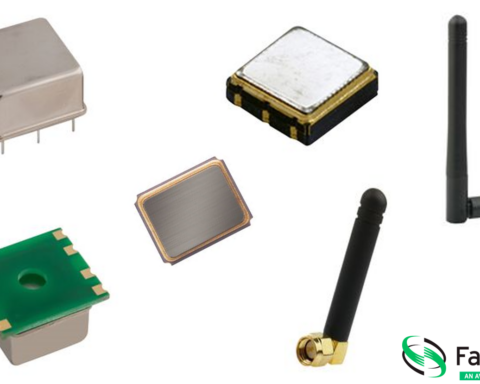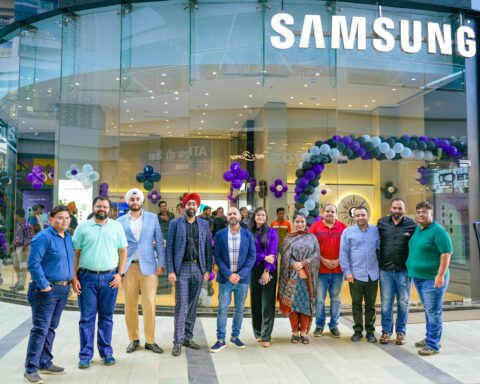
Three hundred and fifty million Indians could enjoy uninterrupted electricity supply if factories and other commercial establishments wasted it less, a brighteyed Arjun Gupta surmised in his report as a research assistant at the Lawrence Berkeley National Laboratory in Berkeley, California, one of the world’s premier research labs and a leader in energy efficiency.
That was in 2010, when he was just finding his feet at his first job, after graduating from the Massachusetts Institute of Technology. Seven years on, Gupta, who has since wound his way through a series of startups and even tried to proselytise energy efficiency at the distinctly old-world Jaypee Group, thinks he can energise India. This time, however, he has taken matters into his own hands with Smart Joules, his energy efficiency startup.
Along the way, Gupta has discovered the promise but, equally, the peril of pushing hospitals and hotels — a key focus of his venture — to be more energy efficient. Like many other startups, Smart Joules is leaning on emerging technologies such as data analytics and internet of things to remotely monitor central air-conditioning usage — the biggest energy hog — at these establishments. “There are large gaps in the way energy efficiency measures are understood and therefore implemented in India,” he says. “Hotels would prefer to buy new furniture or a hospital would invest in new gear, rather than invest in energy efficiency measures.”
Elon Efficiency
Indian ventures looking to crack the energy efficiency market can look to Elon Musk for inspiration. The cofounder of PayPal, digital payments pioneer, and Tesla, which revolutionised automobiles, has since focused his out-of-the-box thinking on energy. His upstart, Tesla Energy, aims to reduce the United States’ dependence on fossil fuels, boost the use of renewables and push home and commercial consumers to be more efficient with their energy use.
To this end, the maverick entrepreneur has seeded a series of ideas to try to make every watt count. Powerwall, for example, is a rechargeable lithium ion battery pack for homes, which provides backup and is integrated with local energy utilities to help consumers manage their electricity needs more efficiently. To maximise the reach, Musk has pieced together a sales and distribution network, including TreeHouse, a home improvement store, hybrid inverter maker Fronius and SolarEdge, a top maker of solar photovoltaic inverters.
Musk’s power push has already yielded customers such as Amazon and Target, with local power utilities too signing up, to better manage the heterogeneous sources of supply. In India, companies have been toying with the challenges of dealing with energy efficiency — and startups have been offering innovative solutions — for the better part of a decade. “There has been a sea change in the way companies and industries procure, use and save energy in the past few years,” says Vibhav Nuwal, cofounder and director, REConnect Energy, an energy solutions firm in Bengaluru.
Today, companies need to not just wrestle with their source of power (conventional or renewable), but also how they source this power (captive plant or external purchase) and factor in newer regulations governing areas such as renewable purchase options. “The traditional approach of hooking up to a grid and hoping for the best is gone… costs and complexity of managing your energy have increased manifold,” adds Nuwal. A lot of optimisation can now be done thanks to the explosion of data in this space. “We can analyse the performance of a 10-year-old turbine and use technology to remotely optimise its performance. This has changed the way we think of this business.”
Light-Bulb Moment
Founded in 2010, REConnect is one of the older ventures in this business. In seven years, the company has evolved from being a trader in renewable energy certificates (RECs) to building its own suite of energy efficiency products. Its focus on the latter continues to be in the renewables space — data analytics for wind and solar farms to provide 15-minute granularity on generation, for example — even as it seeks to expand deeper into the analytics space.
While REConnect controls around 45% of the REC market in India, it’s the technology business that Nuwal is most excited about. According to the Union Ministry of Power, India’s renewable energy capacity is expected to go from 50 GW (gigawatts, 1 GW= 1 billion watts) to 175 GW in a decade, and segments such as performance monitoring will explode in parallel, giving ventures such as REConnect a shot in the arm. New technology platforms and solutions from startups such as Smart Joules have begun to chip away at an age-old problem. According to one estimate, India can save nearly $9 billion in energy costs by replacing power-guzzling appliances and fittings (switching from incandescent and CFL bulbs to LED ones), mostly at state-subsidised costs.
According to Energy Efficiency Services, a four-way joint venture of state-owned companies, using LED bulbs can save 100 billion kilowatt hours (kWh) a year; replacing 50% of irrigation pumpsets can cut another 25 billion kWh and installing more efficient air conditioners another 25 kWh. (One kWh is 1 kW of power sustained for one hour; 1 kW = 1,000 watts.) All these programmes tie into the Union government’s ambitious project of electricity for everyone in two years.
Some entrepreneurs think these goals may be only skimming the surface. “We want to shift the focus from retrofits (moving from incandescent or CFL to LED bulbs) to operational energy efficiency,” says Vishal Bansal, cofounder of Zenatix, a pi Ventures- and Blume Ventures-funded startup. The company, founded by three 2002 batchmates of IITDelhi, focuses on operational energy efficiency. Zenatix’s founders have tested their solutions with large enterprises in sectors such as healthcare and energy before settling on offices, hospitals and hotels as their core target. While their initial product was a basic, building management system to monitor energy use, Bansal says they quickly realised their customers didn’t know what to do with this raw data. While providing insights was one way to expand their business — with customers such as Vodafone, Domino’s Pizza and State Bank of India — the evolution of technology also pointed the way forward for Zenatix.
Watt Now?
According to industry experts, there may be a massive opportunity in India for energy efficiency upstarts, but the challenge is to get companies — and individuals — to pay for them. “Small and medium enterprises are not very aware about the potential of energy savings in their units and lack finances to make investments,” says Amit Kumar, partner, PricewaterhouseCoopers, an audit and management consultancy outfit.
This context is the reason for investors such as Manish Singhal, cofounder of pi Ventures, to back companies like Zenatix. “Companies in this space are addressing a large and complex problem by providing a simple technology-driven solution,” says Singhal. “We are interested in backing companies that use data to solve unique challenges.” Opportunities may also emerge in factory automation and hybrid power use, which could seed several more startups. Despite Singhal’s optimism, investors tread this space with caution, primarily because business models aren’t yet proven and the energy market is one of the most regulated yet disorganised sectors in India.
While social impact investors such as Infuse Ventures have made small investments in India, the marquee VCs are yet to make a mark here. Entrepreneurs in this space are not very worried. Cash-burn is something they are perhaps not yearning for. “We are self-sustaining and profit-making and, unlike other sectors, we don’t need millions of dollars to burn on marketing,” says Nuwal of REConnect. “Our fund-raise in future will be from long-term, strategic investors.”
For now, these entrepreneurs are busy solving problems on the ground. In Chennai Dayal Nathan, founder of Energyly, a venture focused on energy efficiency solutions for small enterprises, thinks most business owners urgently want to decrease electricity usage but don’t know how. “Existing energy management solutions are too expensive and complicated for small businesses to implement,” he says. “Ninety-five percent of small businesses aren’t aware of these solutions. Concepts such as IoT are yet to percolate down to most of them.”
According to some estimates, locally devised solutions would cost a fraction of similar ones from multinationals such as Schneider and Honeywell. Consultants such as Kumar contend that a series of government initiatives, including standards for and labelling of products, an energy conservation building code and national energy conservation awards, has substantially raised the awareness of companies on energy efficiency measures. Large industries know the potential of energy savings in their units and recognise that investments made on implementing energy conservation measures are paid back in three or four years.
“Companies like Domino’s Pizza (with hundreds of outlets nationwide) can’t have a person at each outlet monitoring energy use,” says Bansal of Zenatix. “Employees walk in at 8 or 9 am and service starts by 11 am — there’s a big gap, with energy getting wasted.” Zenatix uses a cloud-based solution called Wattman to give Domino’s — and others such Vodafone, Airtel and Mother Dairy — the opportunity to streamline their energy use. “We have installed this product at 500 sites and want to increase this 10-fold in the next 15-18 months.”
Energyly, the startup in Chennai, began by connecting a USB cable to a computer, then relied on an offline memory card, before leaning on wireless and IoT to keep small businesses energy efficient. The existing solution provides a simple interface for business proprietors — often technologically challenged — to remotely monitor their units’ power usage. “Even if we target 10% of the 20 million-odd SMEs in India, there’s a massive opportunity waiting to be tapped,” says CEO Nathan. Energyly’s product is today used by over 100 companies, but Nathan thinks this can triple in the next couple of years, with plans to target small businesses overseas too.
The opportunity to be energy efficient, then, may come from many sources. IIT-Delhi hostel mates Manoj Meena and Sibabrata Das started their venture Atomberg Technologies by focusing on the development of data acquisition systems and vehicle systems. Facing a business model with limited scale, they leveraged their core strengths — around motors — to focus on the ceiling fan market. Now the duo want to reach some lofty goals.
Energy efficiency initiatives may not be limited to conventional sources alone. In 2013, Jiten Apte, a serial entrepreneur and cofounder of iGren Energi, began focusing on squeezing savings out of an emerging and fast-escalating demand for solar energy installations. The firm’s solar optimiser solution has recently completed an eight-month trial at a Tata Power unit in Keshavpuram in northwest Delhi, and Apte thinks iGren is primed to look beyond for business. “We have about 0.5 MW of installed capacity and in the next few years this should go up to 3-4 MW, as projects go on stream,” says Apte. “We expect to be a $100 million company in four-five years.”
To achieve this stiff target, iGren should chase clients not just in India but also large anchor customers in the US and Japan where solar use is more widespread and extend its reach by roping in companies in allied spaces, such as battery makers. Elsewhere, Rajat Gupta, a mechanical engineer from IIT Delhi and an MBA from Harvard, spent a year putting together the foundation for his venture Thermal Energy Service Solutions or TESSOL. Instead of electricity use, this venture focuses on replacing fossil fuel-driven cold-chain units with those powered by electricity. According to Gupta, the operating costs are 60% less and the payback time for transporters is six-and-a-half months, compared with six years with traditional, diesel-powered variants.
“We want to build a compelling business case by promoting energy efficient, chilling products over those powered by fossil fuels,” says Gupta. To do this, he touts the advantages of electric-driven chillers over existing offerings (electric chillers result in quicker cooling, unlike diesel chillers that require a motor to run for a long time, which may be a challenge in cities with heavy traffic and multiple stops). Already, 200 of these electricity-driven units have been sold, with Gupta expecting to sell up to 1,500 units in three years. “Around 10,000 units are sold in India annually. We are targeting industries as diverse as dairy, poultry, frozen foods, grocery and even floriculture with our products. We aim to provide 24-hour temperature-controlled product movement.”
Atomberg’s starting point for this quest is the simple ceiling fan iX a Rs 6,000 crore market that has seen little innovation in the past 50-60 years. Atomberg’s founders extended their expertise with motors to look at an emerging technology for fans called brushless direct current (BLDC) motors, which have fewer moving parts and are more energy efficient than existing options. The team has sold over 50,000 fans to the likes of Infosys, ITC, Aditya Birla Group, Hyatt Hotels and Indian Railways and plans to use this expertise to look at other categories as well.
“In the next five to seven years, we are also looking to make large appliances like air conditioners more energy efficient by replacing motors used in compressors with energy efficient BLDC motors,” says Meena. Every year, four crore ceiling fans are sold in India. The number of BLDC fans sold is not even 0.5% of this, and Atomberg’s founders hope that one day all ceiling fans in India are replaced with these energy efficient ones. With the focus on energy efficiency only expected to accelerate, these entrepreneurs hope their ventures are well positioned to cash in on this massive opportunity.
8 mins read
What a bunch of Indian startups have in common with Tesla






